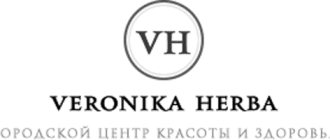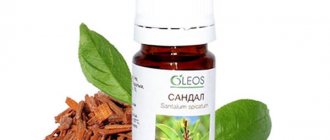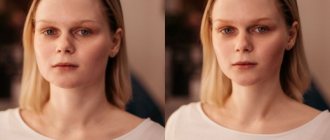Nowadays, material possibilities can destroy any barriers. A wealthy person not only surrounds himself with luxurious interiors, cars and branded items, but also tries to change the appearance that nature has endowed him with. Fortunately, modern cosmetology and medicine have gone far ahead, and the danger to health, which was real twenty years ago, is practically absent.
Unfortunately, manipulations with one’s own figure or face are not always successful. The main problem is choosing a doctor and a clinic that will perform expensive procedures. In the capital, similar establishments are located in every district, but this does not mean that you should trust the first surgeon you come across who promises to create your dream figure.
The SPIK Beauty Institute in Moscow offers a wide range of plastic and cosmetology services. The medical center, whose branches are today located in two of the largest Russian cities, has been successfully operating since 1994.
Today, SPIK institutes (Moscow and St. Petersburg are the cities in which the clinics are located) are part of the Veronica group of companies. An impeccable reputation, respect from colleagues and thousands of happy patients - you must agree that the results of twenty years of work deserve attention.
Plastic surgery
The team of plastic surgeons at the SPIK clinic (Moscow), whose reviews of their work are posted on the official website, advises you to sign up for a consultation before making a decision. During a personal conversation with a doctor, you will be able to learn about all stages of the future operation. These are the conditions of the procedure (anesthesia, sequence of actions), rehabilitation and possible risks and complications. In addition, a hologram is created for each patient, which allows future changes to be assessed and adjustments made.
The SPIK Beauty Institute in Moscow keeps up with the times. Specialists are ready to conduct a consultation via Skype if the future patient does not have the opportunity to come in person.
To obtain more detailed information, you can provide photographs - then the doctor will be able to assess the “front of work” in advance.
What caused the discord between the co-owners of SPIC
The increase in demand and total patient costs for aesthetic surgeries, recorded by Vademecum, is accompanied by corporate scandals. A year ago, one of the leaders in the Russian plastic surgery market, the capital's Ross Clinic, experienced a noisy change of business owners. And at the beginning of August, the clinic that was included in the national TOP 3 in terms of the number of operations performed, the St. Petersburg Institute of Beauty (SPIK), found itself at the epicenter of a corporate conflict. The parity owners of the clinic - plastic surgeon Arthur Rybakin and businesswoman Valentina Nesvatova, who had been successfully developing a joint venture for 15 years, unexpectedly began dividing the business, and Rybakin moved to work in a new project with the consonant name “SPIKA Beauty Institute”.
The owner of St. Petersburg medical Valentina Nesvatova and plastic surgeon Arthur Rybakin founded SPIC in 2001. The initial investment in the project was $300 thousand. As Rybakin said, in those years in St. Petersburg the new clinic had no serious competitors, SPIC’s turnover grew rapidly, which allowed the co-owners not only to expand the business in the Northern capital, but also to open a branch in the capital as such, and in the very center of Moscow - not far from the famous Beauty Institute on Arbat. Work in the most commercially attractive regions has made SPIC an industry leader. In 2015, two flagship partner clinics, according to the Vademecum Analytical Center, performed almost 3 thousand plastic surgeries. According to SPARK-Interfax, the revenue of specialized enterprises associated with the Nesvatov-Rybakin tandem in 2014 exceeded 541.5 million rubles.
But in light of recent events, SPIC risks losing its status as the largest player in the aesthetics market. In early August, patients, worried about the “dead” official website of the clinic, began bombarding its VKontakte group with questions along the lines of: “What happened? Why did plastic surgeons and cosmetologists leave?”, “Does SPIC operate at the same address on the street. Savushkina or moved to Pirogovskaya embankment?” The group’s administrators reacted coldly: the clinic has not moved anywhere and is still operating, and the team of plastic surgeons is currently expanding, so making appointments has been suspended for now. The fact that something was wrong in the company was indirectly indicated by the fact that Irina Yurenis was hastily appointed as the new head of SPIC and the appearance of several new doctors on the staff of the clinic.
As Vademecum found out, the bulk of the SPIK employees, together with the chief physician and co-owner of the company, Artur Rybakin, actually moved to another clinic with a surprisingly similar name to the previous one, “SPIKA Beauty Institute.” This medical center is managed by SP LLC and SP Plus LLC. The first company received a license for medical activities on August 8, 2016, the second - at the end of November 2015. According to SPARK-Interfax, both “SP” and “SP Plus” are 100% owned by Natalia Jung, who is also a co-owner of the company - distributor of medical equipment of the Israeli Venus Concept - Venus Concept ru LLC. At the same time, Artur Rybakin is still listed as co-owners of legal entities associated with SPIK: he owns 50% in the authorized capital of SPIK LLC, 50% in SPIK Plus LLC, and 45.45% in SPIK+M LLC. , in SPIK Medtour LLC - 33.33%. Rybakin does not comment on whether he is the actual founder of the new clinic “Beauty Institute SPIKA”.
In the summer of 2015, a similar scandal erupted around the Moscow Ross Clinic, which in 2014 was among the TOP 5 specialized Russian medical centers with an annual rate of about 1,500 aesthetic plastic surgeries and a turnover of 150–200 million rubles. Then the head physician and co-owner of the medical center, Andrei Ross, filed a complaint with the prosecutor’s office and the police against his partner in the medical business, the famous capital entrepreneur and founder Sergei Tsukanov. Ross claimed that the partner misappropriated his property and violated the labor rights of the surgeon personally and his employees. Tsukanov's representatives flatly denied this. Ultimately, the partners separated completely - Andrey Ross opened his own clinic, Ross Medical Group, and Ross Clinic became part of the Lineline network of laser cosmetology centers. The scandalous change of owners had virtually no effect on the operating performance of Ross Clinic. In 2015, according to a study by the Vademecum Analytical Center, the center performed more than 2 thousand operations - a third more than in 2014.
What the misunderstanding between the founders of SPIC, Vademecum, will result in, was found out from the main characters - Valentina Nesvatova and Artur Rybakin.
aesthetic surgery, plastic surgery, ross clinic, rybakin, spika beauty institute, spik, investments, beauty institute on arbat
Source: Vademecum No. 17, 2016
aesthetic surgery plastic surgery ross clinic Rybakin beauty institute spika spik investments beauty institute on Arbat
Subscribe to our channel in Telegram Subscribe to our channel in Yandex Zen
Share on social networks
+1 +1 +1 +1
Figure correction
In the unofficial rating of plastic surgeries, mammoplasty, in particular breast augmentation and lifting, leads. The modern endoscopic method is preferred by surgeons all over the world. In this case, minimal tissue trauma occurs, and the length of the scars is also reduced.
Own developments in the field of cosmetology, which are used by the SPIC Beauty Institute in Moscow, can reduce the rehabilitation period and the risk of possible complications. After mammoplasty, the swelling disappears after two weeks, and if you follow all the doctor’s recommendations and constantly wear compression garments, patients can see the desired result in the shortest possible time.
Plastic surgeons will help you create an ideal figure using abdominoplasty, liposuction, gluteoplasty and various lifts. Do you want to reduce your size, smooth your skin, get rid of hated ears and “breeches”? Visit the SPIC Beauty Institute, customer reviews tell in detail about the achieved effect and the emergence of self-confidence.
Patients note competent consultation and careful examination. Doctors honestly point out shortcomings without trying to impose unnecessary services.
Electric cars are coming to SPIC
2K 2 3 min.
The conclusion of a special investment contract (SPIC 2.0) for electric vehicles has so far only interested little-known players in the auto industry - the former assembler of Chinese cars from Lipetsk Motorinvest and the startup from St. Petersburg Electric Vehicles Manufacturing Rus. Unlike the Kaliningrad Avtotor, which announced the production of a small electric car, the St. Petersburg company promises to make a competitor to the Gazelle. Motorinvest plans to master the production of electric vehicles on a foreign platform this year.
Photo: Danila Egorov, Kommersant
Photo: Danila Egorov, Kommersant
The Ministry of Industry and Trade named applicants for SPIC 2.0 for the localization of “technology for the production of environmentally friendly urban vehicles based on traction engines” - the department received applications from Motorinvest LLC (Lipetsk Region) and Electric Vehicles Manufacturing Rus LLC (St. Petersburg). The selection results will be announced by March 5. These are actually new players for the car market. A number of others already have an old-style SPIC where changes can be made, for example, Avtotor did this, planning to localize an electric car.
According to the list of technologies, a car localized under SPIC 2.0 should provide a range of 200–700 km on a single battery charge.
Dmitry Babansky from SBS Consulting says that 200 km is approximately 50 kWh, which is comparable to the power of the new Nissan Leaf (60 kWh). Kommersant’s interlocutor among automakers adds that modern urban electric trucks, as a rule, have a range of 250–300 km.
Officials do not disclose details of the projects. The Motorinvest project, which several years ago assembled Changan crossovers, previously appeared in the draft concept of electric transport. Then it was announced that in 2022, 3 thousand domestic electric vehicles from Motorinvest would be released onto the Russian market, and a year later - twice as many. The company itself, meanwhile, received a bankruptcy petition from the Federal Tax Service, but Lipetsk officials said that “the overdue debt arose due to a technical problem” just during its repurposing for the production of electric vehicles (see Kommersant-Chernozemye of June 24, 2021).
Now Motorinvest says that it has invested $150 million in starting production and maintains plans to start it in 2022, we are talking about “several models with a wheelbase of more than 2.5 m.”
When asked by Kommersant whether the company will use a foreign base, Fr. The company plans to score a significant 5 thousand localization points as part of SPIC 2.0 by the end of the contract, although now the presentation only talks about welding and painting.
Electric Vehicles Manufacturing Rus was registered only in June 2021 and plans to produce an “electric truck.” The company clarified that we are talking about a vehicle in the 3.5-ton segment based on the UAZ Profi, “created in close cooperation with UAZ.” Power reserve 300 km. This segment already has the Gazelle e-NN with a range of 120 km and 200 km, and an electric Ford Transit is also planned for release in the Russian Federation.
According to SPARK-Interfax, 55% of the company belongs to Igor Girdin, another 45% to Ilya Rashkin. Rusbase reported that the latter presented to Vladimir Putin in January 2022 “an innovative unmanned tiltrotor-hybrid with a possible speed of up to 500 km/h and a flight range of 2 thousand km,” developed by TGE Group. Now Mr. Rashkin has left the capital of TGE Systems and Solutions LLC, although he remains its general director and this is the place of work he indicates on social networks. Later, Ilya Rashkin acquired Rocket Surf LLC, whose main activity is the production of sporting goods. There, the businessman owns 60%, and Timur Yunusov (Timati) and Natalya Kozhina each have another 20%. Igor Girdin was a member of the board of directors of PJSC Nevsky Bank, whose license was revoked by the Central Bank at the end of 2022.
The head of the Association for the Development of Electric Vehicles, Unmanned and Connected Transport and Infrastructure, Iya Gordeeva, notes that commercial vehicles with a carrying capacity of 1.5–3.5 tons are the most attractive for localization in the Russian Federation. “Here there are much simpler requirements for layouts, transport comfort, quality of gaps, etc.,” she says. But Kommersant’s interlocutor in the auto industry believes that it will be difficult for new players to ensure the volume of production necessary for positive profitability.
Olga Nikitina
Neck and face plastic surgery
Blepharoplasty is a simple procedure that will help get rid of fatty hernias and sagging skin in the eyelid area. As a result of the operation, happy patients forget about swelling and bags under their eyes.
The SPIK clinic (Moscow), whose reviews and reputation are impeccable, receives dozens of clients every day who want to undergo rhinoplasty (correcting the shape of the nose), canthoplasty (changing the shape of the eyes) and comprehensive facial rejuvenation. Real “before and after” photos are presented on the official website of the medical institution.
Many clients note the individual approach. Sometimes the age of some surgeons confuses us, but, fortunately, only the best specialists get work here.
Leaders in cosmetology
It is quite difficult to decide on surgical intervention for the sake of beauty, and a huge list of contraindications (diabetes mellitus, oncology, problems with the thyroid gland, etc.) forces you to look for alternative ways.
Modern techniques make it possible to achieve quite acceptable results without plastic surgery.
The SPIK Beauty Institute in Moscow specializes in cosmetic procedures for rejuvenation, hair, face and body care.
Restoring hair health
Beautiful hair is a source of special pride, but in a metropolis, maintaining its health is not so easy. Sometimes consultation with a professional is simply necessary. Hair loss is often experienced by pregnant women and new mothers, men suffering from baldness, and people experiencing chronic fatigue.
The first step to a beautiful hairstyle is a consultation with a trichologist at the SPIK clinic (not to be confused with the Speak-up courses (Moscow)), reviews and results achieved by clients speak for themselves.
After a thorough diagnosis, the doctor draws up a detailed plan. As part of the complex treatment, plasma lifting, nourishing masks, mesotherapy, medical massage and selection of vitamin preparations are carried out. After treatment, satisfied patients pay attention to the improvement in the condition of the hair: growth is activated, hair roots are strengthened.
Analytics Publications
SPIC: concept, regulation, parties
To date, the Russian Federation, represented by the Ministry of Industry and Trade of Russia, has concluded only 12 such contracts, seven of them with subsidiaries of transnational or foreign holdings. The same number of applications from large business groups to conclude a SPIC are under consideration, and there are significantly more people who want to try to use this instrument to implement their development programs. What is SPIC?
SPIC is an instrument of industrial policy of the Russian Federation, which is an agreement between a private party (an investor and, if necessary, an industrial enterprise) and a public party (the Russian Federation and/or its region, as well as in some cases a municipality), which sets out:
1) obligations of a private party, within a certain period of time, to create a new production of industrial products on the territory of the Russian Federation, the continental shelf of the Russian Federation or in a special economic zone of the Russian Federation, to modernize its existing production, or to master the production of such products, which do not yet have analogues in Russia (hereinafter referred to as target products );
2) the obligations of the public party to guarantee the stability of tax and regulatory conditions in relation to the target products, as well as to provide the private party with special incentive measures and government support provided for by law for SPIC participants.
At the moment, the Government of the Russian Federation has approved the form of a standard contract only for some industries - for mechanical engineering (including automotive), machine tools, metallurgy, chemical, pharmaceutical, biotechnological, medical, light, forestry, pulp and paper and woodworking, electronics, aviation, shipbuilding, radio-electronic industry, as well as the communications industry (Resolution of the Government of the Russian Federation of July 16, 2015 No. 708 “On special investment contracts for certain industries”; hereinafter referred to as Decree of the Government of the Russian Federation No. 708). Accordingly, the investment mechanism under consideration is not applicable to other industries until a new or expanded standard SPIC form for other industries is approved. At the same time, in the near future, a significant expansion of the list of industries in which SPICs can be fully used for investment purposes is expected.
In addition to the above-mentioned Decree of the Government of the Russian Federation No. 708, the main legal regulation of SPICs in the Russian Federation is carried out through:
– Federal Law of December 31, 2014 No. 488 “On Industrial Policy in the Russian Federation”;
– Tax Code of the Russian Federation;
– Land Code of the Russian Federation;
– Federal Law No. 44-FZ dated 04/05/2013 “On the contract system in the field of procurement of goods, works, services to meet state and municipal needs”;
– Order of the Ministry of Industry and Trade of Russia dated 08/07/2015 No. 2288 “On approval of the application form for concluding a special investment contract”,
– Order of the Ministry of Industry and Trade of Russia dated August 7, 2015 No. 2289 “On approval of the Procedure for monitoring and control over the fulfillment by investors of obligations under special investment contracts concluded with them and the forms of reports submitted by investors.”
In addition, many specialized general and sectoral regulatory legal acts have been adopted at the level of the Government of the Russian Federation and the Ministry of Industry and Trade of the Russian Federation, regulating the types of incentive measures and state support in relation to the private side of the SPIC, as well as the grounds and procedure for receiving them.
The provisions of the legislation on investment activities apply to SPIC, unless otherwise established by Federal Law No. 488 of December 31, 2014 “On Industrial Policy in the Russian Federation” and does not contradict the essence of such a contract. In addition, when structuring and developing the terms of a SPIC, the parties actively use the legal tools provided for by the Civil Code of the Russian Federation.
Investors under SPIC can be Russian or foreign legal entities or individual entrepreneurs who are not in bankruptcy proceedings and do not have overdue debts on mandatory payments to budgets of various levels and extra-budgetary funds. A SPIC participant can also be a third party whom the investor has attracted for the actual implementation of the investment project (industrial enterprise). Moreover, there may be several such persons involved. The Russian authorities plan to expand the composition of the private party: optionally include credit organizations, natural monopoly entities, development corporations (institutions), etc. among the SPIC participants.
The period for which the SPIC is concluded is calculated as the period for the investment project to achieve operating profit, increased by five years. But the maximum term of a SPIC cannot now exceed 10 years. At the same time, on behalf of the President of the Russian Federation, changes to the current regulation have been prepared, suggesting an increase in this period to at least 20 years.
Advantages of a SPIC for the private party
An investor can choose incentive measures and government support independently (including together with an industrial enterprise) when submitting an application for concluding a SPIC. The decision to provide a private party with the support measures it has chosen is made by the Interdepartmental Commission specially created by the Government of the Russian Federation to assess the possibility of concluding a SPIC (hereinafter referred to as the Interdepartmental Commission), taking into account:
– preliminary conclusion of the Ministry of Industry and Trade of Russia;
– objectives and/or targets and indicators of long-term and medium-term government programs of the Russian Federation in the industries within which investment projects are being implemented.
Currently, the legislation of the Russian Federation provides for the following guarantees, benefits and/or preferences for SPIC participants (the corresponding list is constantly expanding, including for certain industries):
– stability of tax conditions for the duration of the SPIC (a guarantee that the total tax burden on the income of an investor and/or industrial enterprise will not increase compared to the total tax burden on their income at the time of concluding the SPIC);
– stability of regulatory conditions (guarantees of stability of the regime of prohibitions, restrictions regarding the implementation of SPIC and mandatory requirements regarding the life cycle of the target product, that is, the stages of research, design, production, construction, installation, commissioning, operation, storage, transportation, sale and disposal) ;
– providing, in relation to target products, an exclusive opportunity to sell on the territory of the Russian Federation certain types of goods originating from foreign countries, in respect of which the Government of the Russian Federation has established a strict ban on their admission to Russia;
- benefits for paying taxes (at the federal level - for income tax, at the regional level - both for income tax and in relation to property tax and transport tax, at the municipal level - for land tax if there is an appropriate regulatory framework);
– simplified receipt of public land plots for use for the implementation of investment projects without tendering;
– simplified acquisition of the status of a Russian manufacturer in relation to target products;
– the possibility of acquiring, in a special manner, the status of a sole supplier for government needs (upon accepting an obligation under a SPIC to make investments worth more than 3 billion rubles);
– simplified acquisition of the status of the largest manufacturer of industrial products for the purpose of preferential administration and payment of certain public payments (currently relevant only in relation to the recycling fee for manufacturers of special equipment);
– industry subsidies (for example, to compensate for part of the costs of using energy resources in the production of target products, for maintaining jobs, for transporting these products, for carrying out research and development work in priority areas of civil industry, as well as part of the costs associated with the release and maintenance of warranties in relation to such products).
Regarding such preferences as industry subsidies, it should be noted that the need to provide subsidies to the private party of SPIC in the near future aimed at stimulating the export of Russian products abroad is now being actively discussed at the federal level.
In addition, target products produced within the framework of a SPIC may be of additional interest to its purchasers in that they are subject to accelerated depreciation.
It should be noted that under a SPIC, the private party does not receive ownership of any property or budget investments from the state (its regions, municipalities). In turn, the public party also does not receive any property under the SPIC, including intellectual property and funds.
As a rule, an indication in a SPIC of the application of relevant benefits and preferences means a special (priority) procedure for their receipt by a private party due to the status of a SPIC participant as such. However, the SPIC itself is not a source of incentives and government support. Such measures must be provided for by law at the time of concluding the SPIC.
Key obligations of the investor under the SPIC
The minimum amount of investment under the SPIC in the creation or modernization or development of production of target products is at least 750 million rubles. (excluding VAT). It should be taken into account that, according to the current legal regulation, the amounts of investments made in the implementation of the project before the conclusion of the SPIC are not yet taken into account. The contract may provide for staged investment. Business circles are actively discussing the possibility of reducing the “entry threshold” for concluding a SPIC. At the same time, the Russian Ministry of Finance, on the contrary, proposes to increase this threshold to 1 billion rubles, without taking into account borrowed funds and funds received from the implementation of an investment project under a SPIC.
The private party to the SPIC must undertake obligations to achieve certain target parameters of the investment project within a specific time frame, which the Russian Ministry of Industry and Trade and the Interdepartmental Commission pay attention to when considering the investor’s application.
These parameters are:
– a list of activities of the investment project (for example, acquisition of a land plot, preparation of design and working documentation for construction, supervision of installation of the necessary equipment, construction/installation, etc.);
– the volume of investments in the project (according to the practice of concluding a SPIC, it is necessary to indicate their volume not only for the entire period of validity of the SPIC, but also by year);
– volume (in monetary terms) of produced and sold target products (annually at the end of the calendar year and by the end of the SPIC term);
– the volume of taxes (federal, regional, local) planned for payment upon expiration of the SPIC;
– the share of the cost of materials and components (equipment) used of foreign origin in the price of the target products produced by the end of the SPIC;
– the number of jobs created during the implementation of the investment project (annually at the end of the calendar year and by the end of the SPIC);
– export volume (this parameter is not provided for by regulations, but in practice it is given very great importance by both the Ministry of Industry and Trade of Russia and the Interdepartmental Commission);
– other additional additional obligations of the investor not provided for by regulations, which he is ready to accept and which may be in the interests of the public side of the SPIC (for example, the creation of innovation centers, centers for training highly qualified specialists, etc.).
Body care
The problem of excess weight confronts each of us at least once in our lives. Proper nutrition and physical activity will help you get rid of those hated pounds, but getting your skin in order is not so easy. To restore elasticity, reduce volume, get rid of swelling and defeat cellulite, cosmetologists recommend a course of body wraps.
Are you looking for a reputable beauty salon? SPIK (Moscow) offers a huge selection of wraps, the most popular of which are seaweed and honey. The cosmetic effect is achieved through moisturizing, strengthening blood vessels and the process of cell regeneration. The patient’s condition during a visit to the cosmetologist is also important: the body completely relaxes, fatigue and nervousness go away, and clarity of thought appears.
The SPIK Beauty Institute in Moscow and its team of professionals will carry out almost any procedure related to rejuvenation or figure correction. These wizards have the best cosmetics and revolutionary devices from world experts in the beauty industry in their arsenal.
What is SPIC 2.0?
Enrika Shevchenko: “A special investment contract (SPIC or special investment contract) is an agreement between an investor and the state, according to which the investor undertakes to implement an investment project with the right to receive various incentive measures and tax benefits from the state.
According to the Industrial Development Fund, since the introduction of this mechanism in 2014, 45 SPICs have been concluded (most of them in the chemical industry and the automotive industry). At the same time, proposals were constantly received for the development and improvement of this mechanism.
And so, on August 13, 2022, Federal Law 290-FZ came into force, which introduces significant changes to the procedure for regulating special investment contracts. Amendments were also made to the Tax Code of the Russian Federation, which regulate the issues of receiving benefits by investors and SPIC participants.”
What's new in the SPIC 2.0 regulatory mechanism?
Arthur Oganesyan: “SPIC 2.0 focuses on manufacturability, since it assumes that, as part of an investment project, the investor will develop and implement, or simply introduce, modern technology, on the basis of which he will produce products in the Russian Federation that are competitive on the world market. This is the key difference between SPIC 2.0 and the previous regulation and, in our opinion, the main challenge facing business, since we have yet to determine what “modern technologies” are and what are the criteria for competitiveness in the global market. The government is currently seeking proposals from interested parties regarding what they consider to be state-of-the-art technology.
SPIC 2.0 offers potential investors a number of positive innovations.
Firstly, the minimum investment threshold has been abolished. If previously at least 750 million rubles were required to conclude a SPIC, now there is no such minimum threshold, which potentially makes SPIC 2.0 open to a wider range of investors.
Secondly, within the framework of SPIC 2.0 it is assumed that contracts will be concluded for a longer period. If previously the maximum period was no more than 10 years, now the contract term can be up to 15 years if the investment volume is less than 50 billion rubles, and up to 20 years if the investment volume exceeds 50 billion rubles.”
What support measures are available under SPIC 2.0?
Enrika Shevchenko: “At present, SPIC 2.0 does not provide for any additional support or incentive measures for participants in the special investment contract compared to SPIC 1.0. It is assumed that such measures are either established or will be separately established by separate legal acts.
At the same time, recent amendments to the Tax Code open up new opportunities for companies -
SPIC participants who have already concluded a SPIC in accordance with the old legislation, or who plan to enter into a SPIC in accordance with the latest changes in legislation.
In particular, it is no secret that under the old legislation it was almost impossible to take advantage of income tax benefits. Income tax benefits were established quite significant and allowed the investor to reduce the income tax rate to 0%. But at the same time, the investor had to fulfill the so-called 90% criterion, that is, income from the sale of goods produced during the SPIC had to be at least 90% of the investor’s total income. Therefore, in practice, few were able to take advantage of this benefit. In accordance with the new legislation, SPIC participants have the opportunity to keep separate records of income and expenses from activities related to the SPIC, and apply income tax benefits to these activities.
Also excluded from the Tax Code is the provision that stipulates that only investors have the right to income tax. Accordingly, the question arises: will SPIC participants who are not investors now be able to take advantage of income tax benefits? It is worth keeping in mind that the new legislation on SPIC 2.0 does not provide for the participation of involved persons in the contract, in addition to the investor. Finally, a cap was introduced on the total amount of incentives and tax breaks. Now, such incentives and benefits are in effect until the total total of lost budget revenues and budget expenses does not exceed 50% of the capital investments made in the project that is the subject of the SPIC.”
What questions do businesses have in connection with the adoption of SPIC 2.0?
Arthur Oganesyan:
“Despite a number of interesting positive changes, SPIC 2.0 has raised a number of new questions for business.
Well, firstly, how will modern technologies be included in the list of modern technologies in practice, and how will these technologies be examined by experts?
A question also arises regarding the procedure for concluding a SPIC. According to the new rules, a SPIC can only be concluded based on the results of a competitive selection. It can be either closed or open, depending on the specifics of the project. This is also the key difference between SPIC 2.0 and the previous regulation, which assumed a declarative procedure for concluding a SPIC. Another interesting feature is that the initiator of a project within the framework of the new regulation can be not only an investor (private individual), but also the state itself. Several persons can be recognized as winners of the competitive selection at once, that is, a SPIC can be concluded with several persons at once.
Also, SPIC 2.0 requires mandatory involvement in the contract of the region and municipality where the project will be implemented. At the same time, the law requires that prior consent be obtained from municipal and regional authorities at the time of filing an application to conclude a SPIC. Accordingly, many potential investors have reasonable concerns regarding the extent to which this additional procedure will complicate the procedure for concluding a SPIC in practice.”
What's next?
Enrika Shevchenko: “In general, the new SPIC 2.0 mechanism has not yet started working. And in order for it to work, it is necessary to adopt a number of by-laws, both at the level of the Russian government and at the level of various ministries. In particular, such acts relate to the competitive selection procedure and the list of new technologies. It is expected that such acts will be adopted by the end of this year, and the SPIC 2.0 mechanism will be fully operational next year.
We are monitoring developments and will be happy to answer your questions and help you understand the new legislation.”






